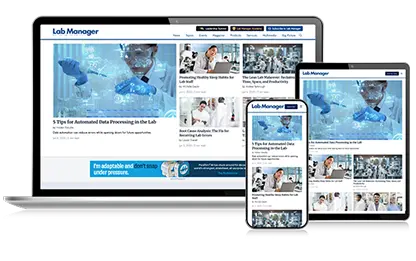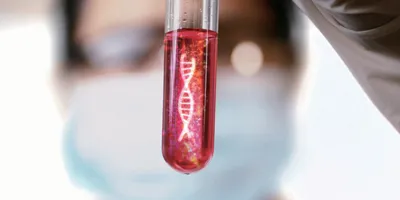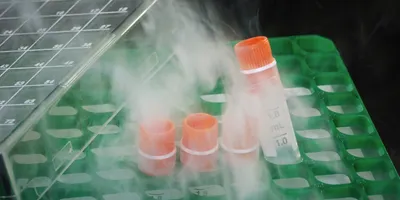The high-throughput demands of modern laboratories have led to a rise in pipette-related repetitive stress injuries (RSIs). In a worstcase scenario, RSIs can lead to surgery and lost productivity costing tens of thousands of dollars. Improved ergonomics is therefore the most easily identifiable trend in pipettes. Materials used to manufacture pipettes have become lighter, and draw/dispense mechanisms easier to actuate.
According to Andrea Dickstein, director of marketing at Eppendorf (Hauppauge, NY), preventing RSIs should be a top priority in high-throughput labs. She provides the following tips for selecting and using pipettes:
- Make sure the pipette fits well in the hand.
- Determine that the volume is easily adjustable and that all buttons are easily accessible.
- Choose a pipette whose plunger mechanism requires low activation force.
- Make sure the operator’s hand can flex without removing the pipette.
- When using a pipette for more than two hours a day, choose an electronic pipette for highthroughput needs, or multichannel pipettes for microtiter plate applications.
- Consider automating through a liquid-handling workstation.
Electronic pipettes are becoming more popular because of the reduction in sample volumes and simultaneous increase in the number of samples processed. Electronic pipettes offer a reduction in the force necessary for operation, and multi-functionality in dispensing techniques.
Calibration is perhaps the most important service-related activity for pipettes. It ensures that the pipette is delivering precise volumes after thousands of cycles. Regulated industries calibrate their instruments several times a year: all labs using pipettes should consider taking advantage of calibration services every six to twelve months.
Some pipettes may be calibrated by the user, but most calibrations are carried out at the original manufacturer’s facility or through a third-party service provider. Some service companies perform calibration at the customer’s site.
Calibration is conducted by dispensing volumes of water and weighing them on an analytical balance. Calibration usually takes place off-site at the calibrator’s facility, under conditions of strict environmental control and using standardized methods and materials. For example, Eppendorf employs a weighing vessel and a trap to reduce evaporation from small samples. The company’s calibration room is maintained at 50 percent relative humidity and a constant temperature. Water used during testing is degassed and distilled; technicians test three different volumes for variable-volume pipettes; and all volumes are measured at least ten times.
A typical calibration costs between $20 and $100 per pipette. Off-site calibration has a turnaround time of two days, while on-site calibration can be done the same day.
Like most routine maintenance, calibration may be viewed as more of an inconvenience than a necessity. “Some users are less concerned about the quality of calibration than about getting a sticker on their pipette that says it’s been calibrated,” says Christian Petrilli, director of marketing at BrandTech Scientific (Essex, CT). “But most recognize the value of a pipette that is calibrated properly. Certainly anyone in a regulated environment knows the importance of calibration.”
ErgoOne™
• Available in single-channel and multi-channel formats
• Tapered tip cones accept TipOne® and other universal tips
• Plunger forces minimize stress and maximize control
• Light, balanced weight reduces fatigue
USA Scientific
www.usascientific.com
Ovation Multichannel
• Features a 50% drop in tip insertion forces and line-of-sight enhancements to further minimize physical effort and save time when acquiring pipette tips
• Four 12-channel models are available for precision liquid dispensing from 0.5 µL to 850 µL
• Four 8-channel models are available for volumes from 0.5 µL to 1,250 µL
• Three user-defined volume settings can be stored for later recall with a single keystroke
VistaLab Technologies
www.vistalab.com
Xplorer® Electronic
• Features electronic piston stroke, low weight and intuitive user guidance to minimize user strain
• Features an innovative rocker: when tip is ejected, piston automatically returns to zero position
• Features a spring-loaded tip cone for maximum tightness
• Single-channel and multi-channel models are available
Eppendorf North America
www.eppendorfna.com
HandyStep® Electronic Repeating
• Automatically recognizes the size of encoded proprietary syringe tips
• Features continuously adjustable volume selection from 1 µL to 50 mL
• Compatible with standard syringe tips from variou MANUFACTURERS
• Features three operational modes: Pipette, Dispense, and Auto-Dispense, which eliminates up to 97% of repetitive motion from repeat pipetting
BrandTech Scientific
www.brandtech.com
The high-throughput demands of modern laboratories have led to a rise in pipette-related repetitive stress injuries (RSIs). In a worstcase scenario, RSIs can lead to surgery and lost productivity costing tens of thousands of dollars. Improved ergonomics is therefore the most easily identifiable trend in pipettes. Materials used to manufacture pipettes have become lighter, and draw/dispense mechanisms easier to actuate.
According to Andrea Dickstein, director of marketing at Eppendorf (Hauppauge, NY), preventing RSIs should be a top priority in high-throughput labs. She provides the following tips for selecting and using pipettes:
To continue reading this article, sign up for FREE to

Membership is FREE and provides you with instant access to eNewsletters, digital publications, article archives, and more.











